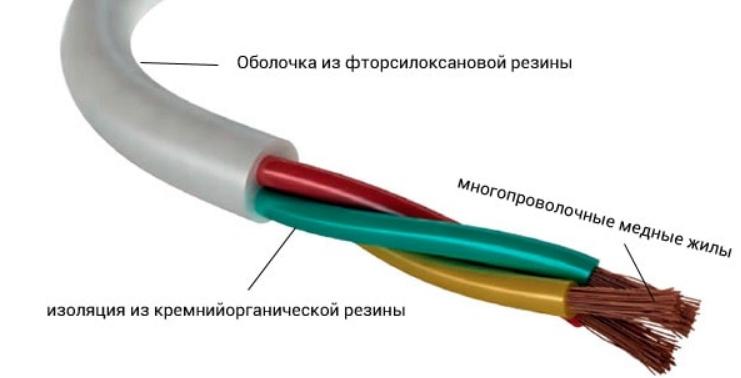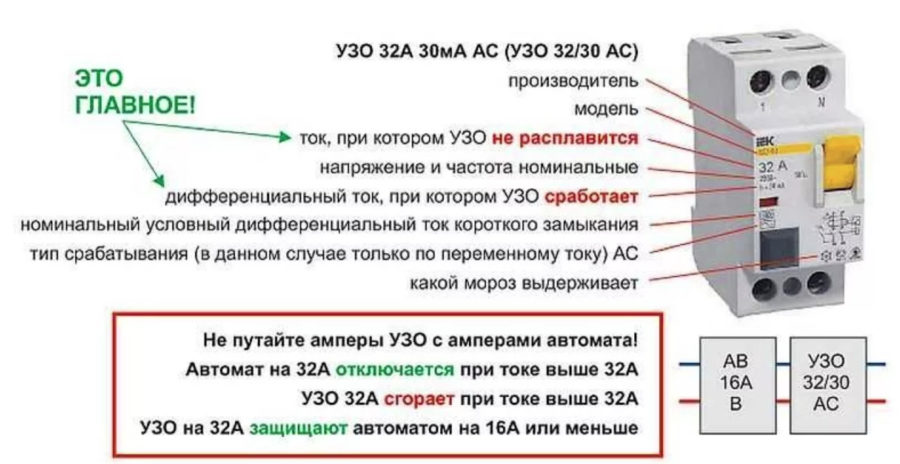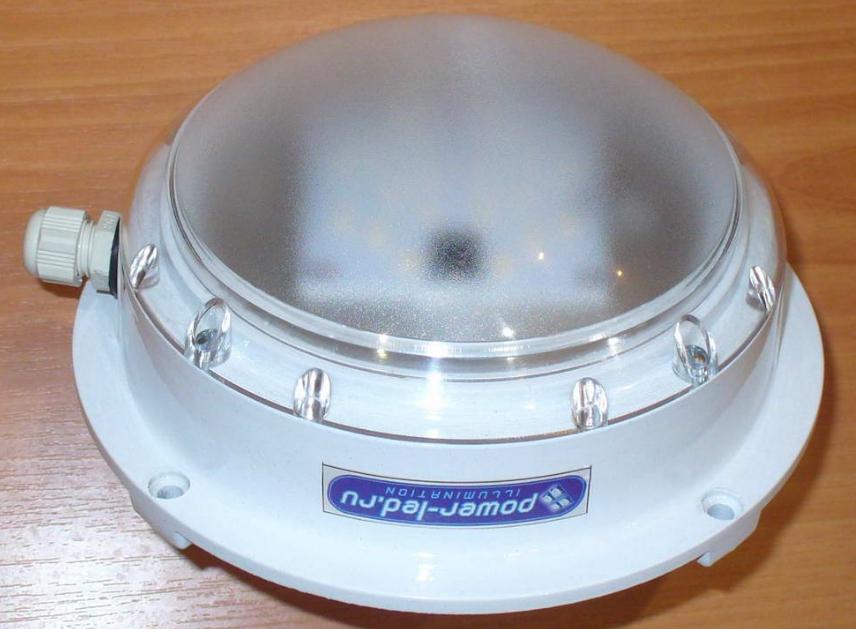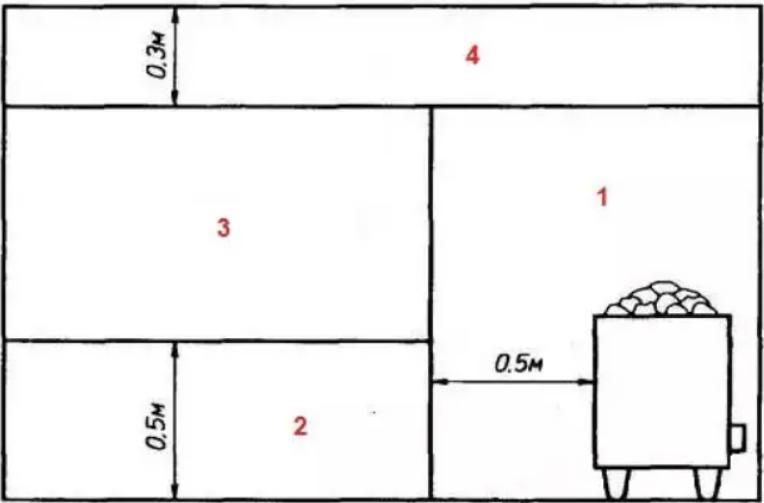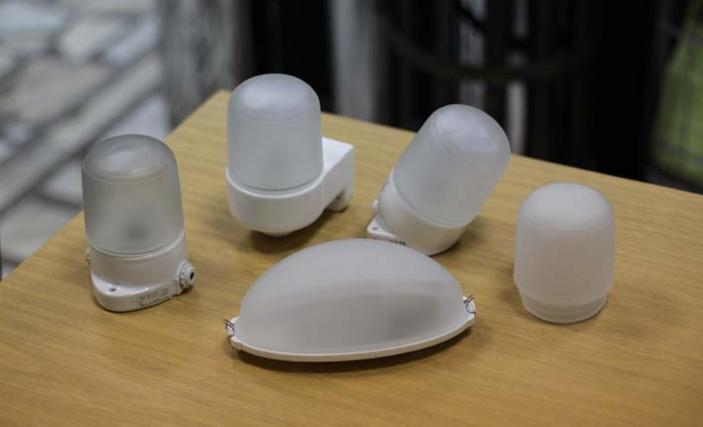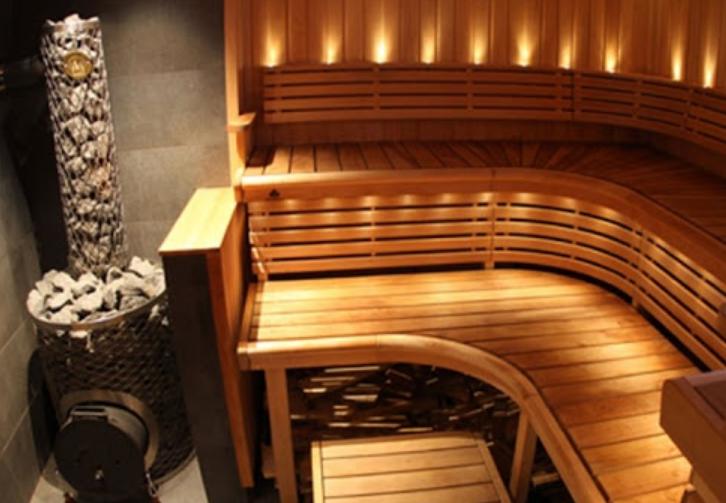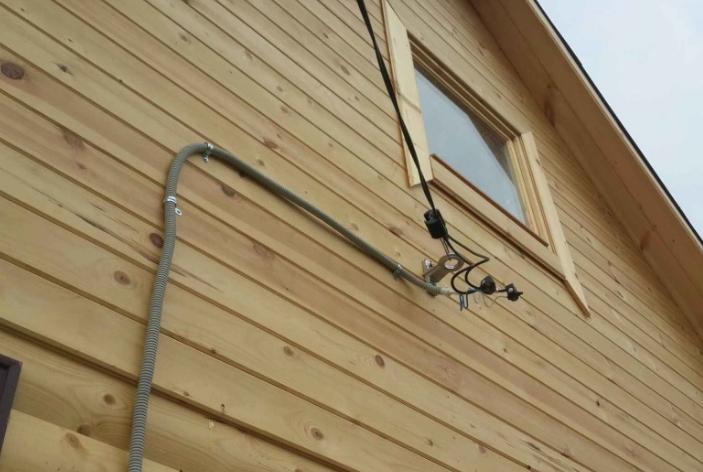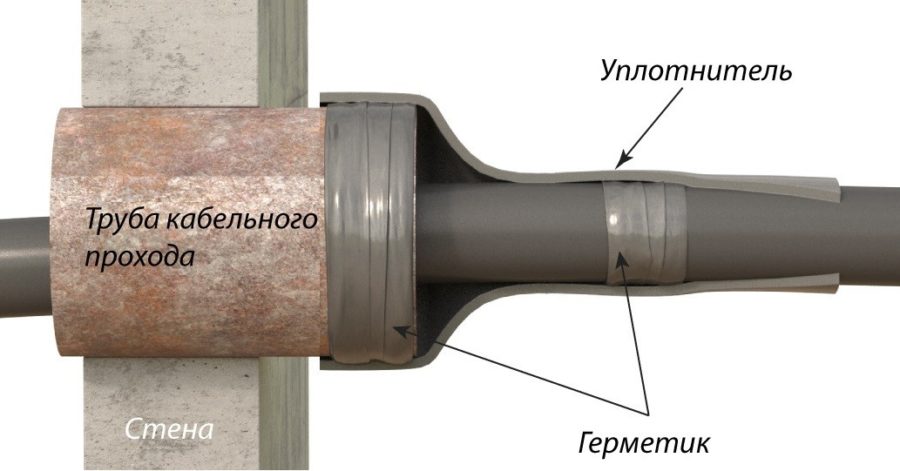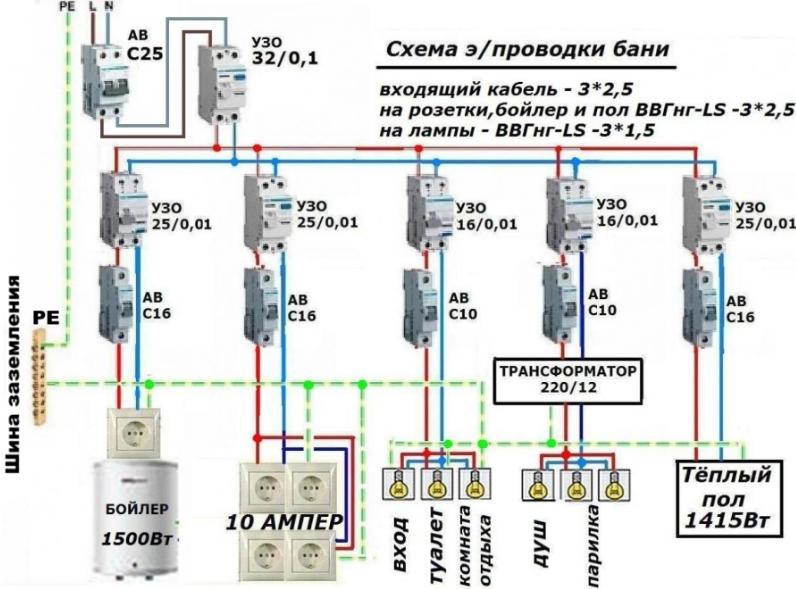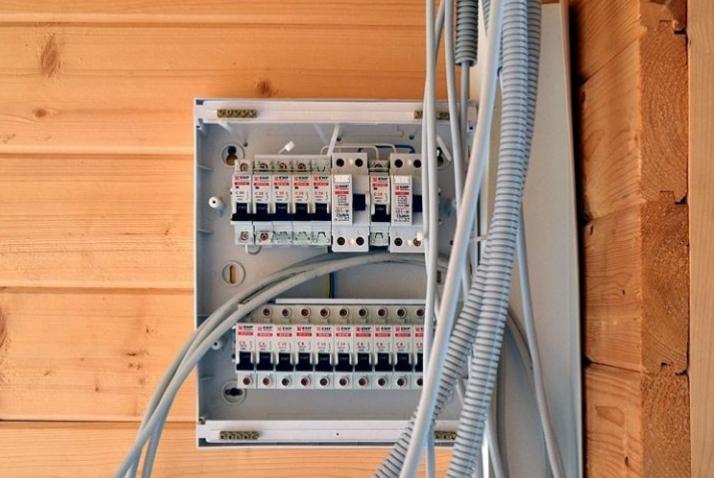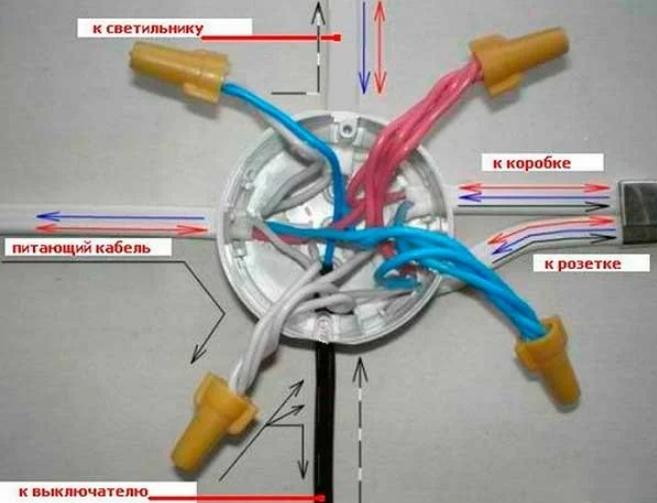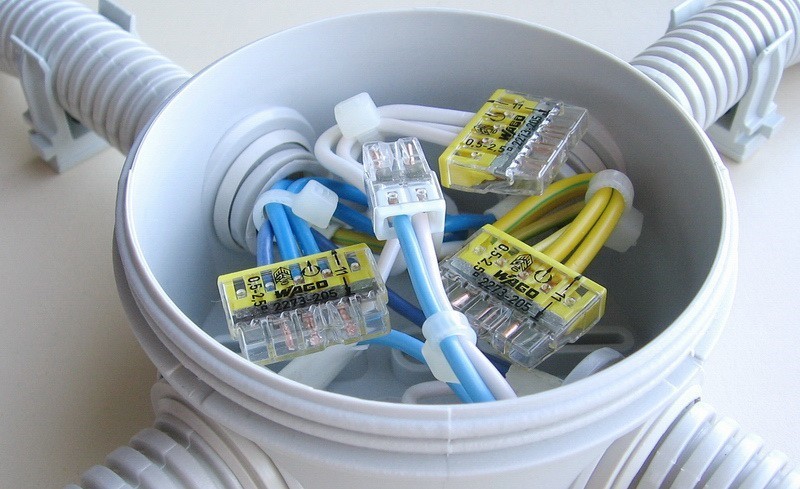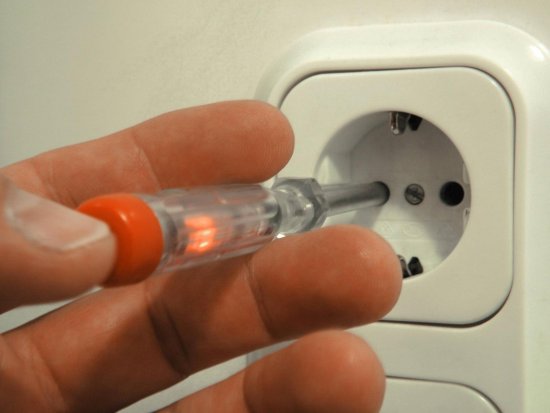Wiring the lighting in the sauna with their own hands
Lighting in the bath is of great importance, especially for the steam room, as there is most often no natural light. To do it right, you need to follow a number of recommendations, as operating conditions are very different from the standard and any violations can lead to short circuits or even a fire. According to statistics, fires in bathhouses most often occur precisely because of poor-quality or improperly laid wiring.
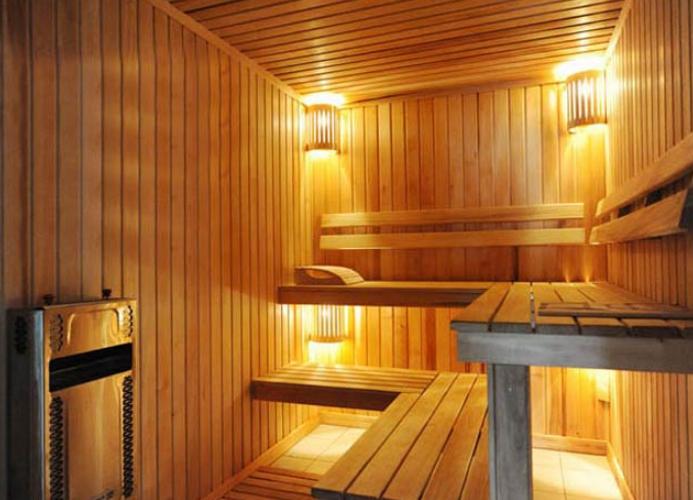
Safety requirements
All standards for baths and saunas are set out in GOST 50571.12-96, SNIP II-L.13-62, as well as in the seventh edition of PUE (Chapter 7). To make it easier to understand, the basic requirements are collected in this section:
- Wiring can be done by either the closed or open method. The first is suitable for wooden buildings and for cases where the surface has already been clad with trim. Cable conduit or PVC conduit is used for wiring, and metal pipes and other elements that conduct current are prohibited.
- It is best to use a cable that can withstand heat up to at least 170 degrees. Suitable copper variants RKGM, PRKS, PVKV, PRKA. You can also use single-core or multi-core PMTK, designed to work at temperatures up to 200 degrees. Of foreign counterparts suit OLFLEX HEAT 205, designed for use in saunas. As for other rooms in the bath, where temperatures are not so high, there VVGng-LS will do.One of the cable options used for laying in saunas and steam rooms.
- Do not use a cable with metal elements in a braid, as due to humidity and temperature they will quickly begin to rust. With open laying method, there should be at least 10 mm to the combustible surface. Be sure to use non-combustible gasket that protrudes from both sides by a centimeter.
- Sockets, switches and junction boxes are strictly prohibited in the steam room. They must be taken out of the room and placed in the most convenient place to make it easier to run the cable.
All metal elements (the body of the furnace, lamp, etc.) must be earthed and the building must be equipped with lightning protection. - In the switchboard must be placed circuit breakers for protection against short circuits and RCDs. Choose RCDs so that the tripping current does not exceed 30 mA, and preferably - 10 mA.
- Do not run the cable over the stove.It is better to choose a place away from the stove. Wires can be connected using pads, soldering, special sleeves or welding. It is forbidden to use stranding, because in difficult conditions, such a connection does not provide the necessary reliability.
- When selecting the power of the equipment, lighting standards for different rooms in the bath. In the steam room, locker room, rest room and shower room the minimum level - 75 lux, if there is a swimming pool, then there the norm from 100 lux and more.
- If natural light in the premises do not have natural light, it is worth to equip emergency lightwhich will allow to safely leave the room in case of power outages on the main line.
- When running the cable through the wall, you must insert a piece of metal pipe. This is necessary to prevent damage to the cable when the wall is deformed.
- When selecting lights and outlets for all rooms, consider the conditions of use. For locations with high humidity, choose models with protection class IP65 or higher. In locker rooms or corridors, standard equipment can be used.Sealed heat-resistant LED luminaire for rooms with temperatures over 100 degrees.
By the way! In order not to lay wiring in the steam room, you can lead it in adjacent rooms and at the locations of lighting fixtures to make holes in the wall for the connection. In this case, you will not have to protect the cable, the work will be greatly simplified.
What voltage is best for wet rooms
Light in the steam room should be not only functional, but also safe. It is necessary to pay attention to the choice of a suitable voltage, there are several options:
- Single-phase voltage is most often used for the main power supply of all rooms 220 V. This is the most common solution, which is also suitable for lighting in the steam room, subject to several conditions: protection using differentiated circuit breakers and RCDs, grounding according to the TN-C-S system. It is also mandatory to have an EMS (equipotential bonding system).
- If you use powerful electrical equipment with high power consumption, the three-phase input is suitable. This option is used to power boilers, underfloor heating, pumps, etc. And the requirements for lighting in the steam room are the same as for single-phase.
- The single-phase reduced version is used for lighting. If you run a light in the sauna that runs on 12 or 36 volts, the The safety level for the person will be many times higher. This is the most preferred solution, for which you will need a step-down transformer. It should be installed in the switchboard or in a room with a normal level of humidity, in showers and steam rooms can not be mounted. If you implement such a variant not only in wet rooms, but also in the rest room, corridor and pre-bath, you can save on electricity.
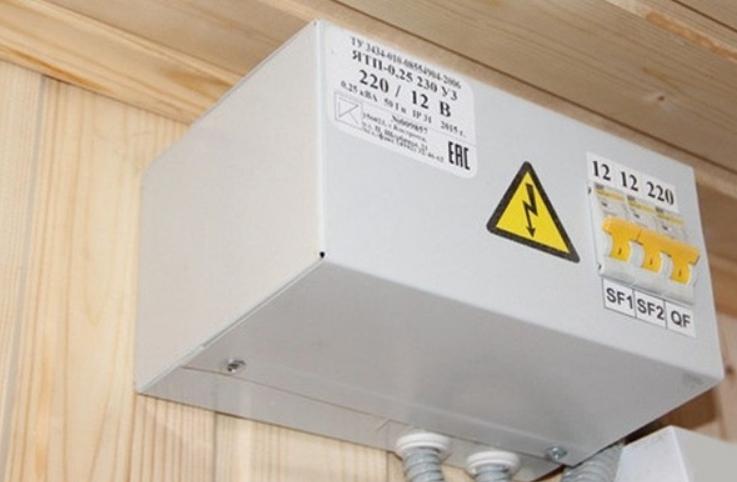
In addition to lighting, other equipment can be operated from the low-voltage line. If necessary, sockets can also be installed.
What lamps are suitable for the steam room
The first thing to remember is a simple rule: Lights in the steam room should not be placed on the ceiling. They are always mounted on the wall with a gap of at least 30 cm from the ceiling. And they have to be placed in the third zone, in the second zone you can only put a light fixture, it is easier to orient according to the scheme.
You need to remember a few simple recommendations:
- Backlighting of the second zone can be done using fixtures with heat resistance from 50 degrees. But it is better to put options that can withstand high temperatures, to avoid any problems.
- In the third zone is the main lighting, and you should choose only fixtures with a level of water resistance not lower than IP54. In this case, the plafond and the body must normally withstand heating up to 125 degrees.
- When choosing, it is best to give preference to models with ceramic bases, they are much better able to withstand the heat. Plastic bases - not the best solution for the steam room with fluctuations in temperature and humidity.The best solution for the steam room or sauna will be lamps on a ceramic base.
- The plafond can be made of frosted glass or heat-resistant polymer material. Usually a silicone gasket is placed between the plafond and the body for tightness.
From the video you will learn whether to use LED lamps in the bath.
As for light sources, there may be several options. All of them have proven to work well, so you need to choose based on the features of the steam room and the budget:
- Incandescent bulbs. - The traditional option still in use today. They consume a lot of electricity, do not last very long, but they are cheap. Usually you can't put more than 60W bulbs in the lamps, so the light is not very bright, the shade of yellow, close to natural.
- Halogen options work well in the steam room, as they themselves are heated to high temperatures, so the hot air does not harm them. They differ in the quality of light and can work from both standard and low voltage, which is very important. The service life is not very long, for maximum efficiency, you should buy lights in a heat-resistant version.
- Fluorescent lamps allow you to equip comfortable lighting in the sauna or steam room, because they have different options for brightness and shine with a minimal flicker index. They come in different shapes and sizes, the main thing - buy a model with a high degree of protection against moisture and heat.
- LED lights previously were not used in the steam room, as poorly tolerated the extreme conditions. But now there are models that are specifically designed for high temperatures, it is necessary to choose only options for saunas, standard equipment can not be used. Diodes consume little electricity, give a soft diffused light and work from low voltages.
- Fiber optic lighting systems are considered one of the best for steam rooms. They consist of a projector and long light transmitting elements that are placed in the right places and give a comfortable light. The option is more difficult to install and is much more expensive than other solutions, but can withstand heat up to 200 degrees and provides the maximum level of security.
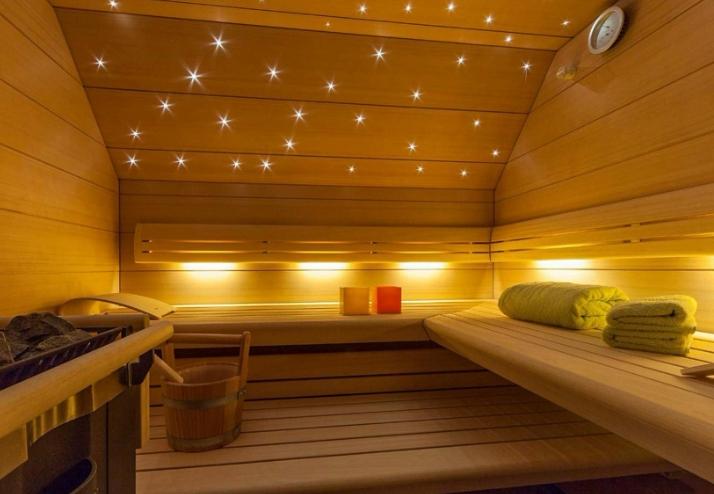
An overview of the prices of popular fixtures for the bath.
Variants of placement of fixtures in the bath
Here it all depends on the room, as there are several types with different operating conditions. It should be noted that you can put fixtures with the highest level of protection everywhere. The main features are as follows:
- In the steam room, it is best to place fixtures on the wall or in the corners. When choosing a location to consider safety, the equipment should not interfere with people. If the room is small, it makes sense to place the light source in a wooden frame, so that exactly no one can touch it. Lighting in the bath can be located at the bottom of the wall or under the shelves, if they are not solid and allow light to pass through.Light sources in the steam room can be located behind the back of the seat or under it.
- For showers choose lamps with a high degree of protection against moisture, they must be able to withstand even a direct jet of water. But it is better to put them so that the surface got less splashing and at the same time the light was normal in the booths and in other parts of the room. It is allowed to mount the equipment both on the walls and on the ceiling.
- In the anteroom, people undress, there are mirrors, outlets for electrical appliances. There are no restrictions on equipment, you can place lights on the walls, use spot lighting, or hang a chandelier or light panel in the middle.
- For the rest room lighting choose based on comfort and design. It can be any model - from classic chandeliers to LED strips. It is worth remembering only that for unheated rooms it is better not to use fluorescent lamps, as they do not work well at temperatures below 5 degrees.
In the corridor and in front of the entrance it is better to put lights designed for open air. To ensure that the light on the street does not work long and turned on only when there are people in the yard, it is easiest to put a motion sensor.
Stages of installation of electric lighting
It is necessary to make not only the light in the steam room, but to create a full and safe system of electrical supply in the bath. Therefore, for simplicity, the work should be divided into stages and do them one by one.
Preparing
Even before installation, it is necessary to carry out a number of preparatory works. Their list and complexity may vary. But most often the process consists of such actions:
- Bringing the power cable to the bath. Usually an overhead line is used, the cable is attached to a special bracket on the wall, the height of the location should exclude accidental contact of people and animals. The second option - underground laying, it is much safer, but also more difficult. You will have to dig a trench, to lay the cable in a HDPE pipe, but you can take it directly into the room below the location of the switchboard.Most often, to connect the power line you need to call an electrician from the power supply company.Diagram of cable wiring through the exterior wall.
- Drawing a project. The more detailed and accurate the diagram, the better. It is necessary to specify all the lines that will be required, this may be lighting through the step-down transformer, outlets, boiler, floor heating, electric boiler, etc. It is also necessary to provide for earthing. On each branch circuit should be put a circuit breaker and RCD to ensure safety.
- Calculation of necessary components and materials. First of all, determine what kind of cable and how much you need, it all depends on the power of the equipment. If there will be a boiler, it is worth to read the manual, there specifies the optimal cross-section of the cablewhich should be used for its connection. The easiest way to make a list of everything you need. Do not forget about the junction boxes and corrugated or cable duct - it depends on the method of installation.
- Buy everything you need for the job. Cable and other goods measured in linear meters, it is better to take with a reserve, to exclude the situation when there are not enough a few tens of centimeters. Choose high-quality components, do not skimp on this. Prepare the necessary tools, here it all depends on the specifics of installation.
It is worthwhile to make in advance a project in the prescribed form and coordinate it with the supervisory organization.
Laying and connecting cables
Select the location of the electrical panel, it is best to put it in a dry room near the entrance. The size is chosen depending on the number of circuit breakers and RCDs that will need to put. Sometimes there is also a step-down transformer. It is best if the cabinet will be locked to protect it from children. The work is carried out as follows:
- The panel should be mounted at a height of 140-180 cm from the floor. The power cable is wound through a separate circuit breaker, which can disconnect all power consumption if necessary. Next, all the circuit breakers and RCDs are installed, they can easily be mounted on a special rail. You can stick stickers indicating the purpose of this or that option, so as not to confuse.The size of the switchboard depends on the number of circuit breakers and RCDs to be installed.
- Make marks on the walls to see how the cable will run. Also mark the location of switches, lights and junction boxes.
- If you use a hidden variant of laying, then make strohlyrka with a punch and a grinder with a disk on the concrete. You also make cuts for sockets, switches and junction boxes, to do this is easiest to use special drill bits of suitable diameter. In the chinks cable is laid with the use of corrugated PVC.Example of laying in the chink.
- With open method of laying on the surface secure corrugated tape or cable-channel in compliance with all conditions. Boxes, switches and sockets can be overhead or built-in.
- Make cable connections only in junction boxes. It is best to use moisture-resistant caps or terminals for this purpose. This is the easiest and most reliable solution that allows you to connect the wires, even without much experience.Special waterproof caps for connecting wires are an ideal solution for damp areas.
- At the connection points of all energy consumers leave the ends long enough to be able to join without pulling the cable.
Do not forget about grounding, to the circuit to which connects the electrical panel and all the elements that require it.
Lighting installation and testing
After laying the wires, you can proceed to the final work. Here everything is simple enough:
- Connect light fixtures, sockets and switches with pads or sealed caps, if they stand in a room with high humidity.Example of the correct connection of wires in a junction box.
- Fasten the equipment to the walls or ceiling in a suitable way. The main thing is to fix the elements firmly to prevent them from falling.
- Connect the power supply and check the operation of all lights and sockets.Check the sockets with an indicator screwdriver.
- Call a representative from an electrical testing company to verify all readings and issue an authorization for use. This is the only way to be sure everything is done correctly.
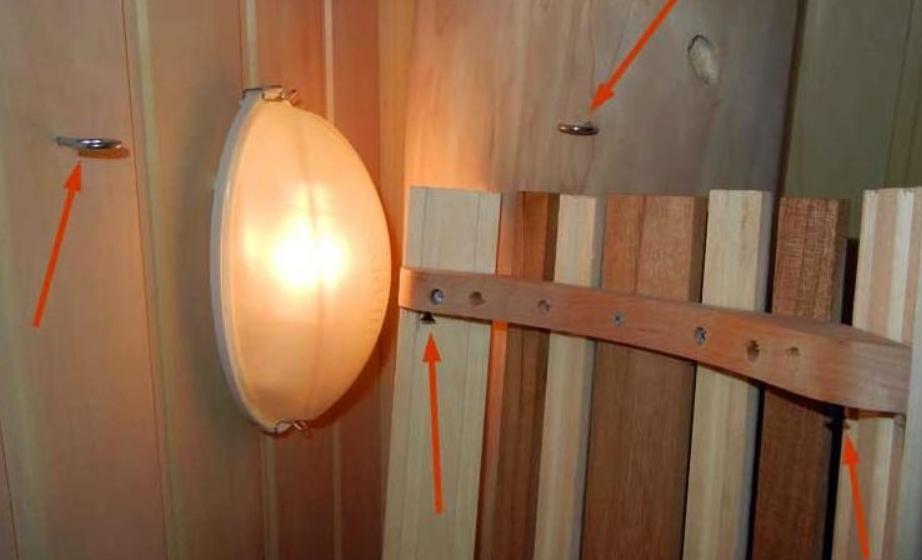
Low-voltage lighting can be powered by either a transformer or a battery that will power the lights during power outages.
The final video tip: How you can save money on buying a light fixture for your bathhouse.
Installing wiring in the bath is not difficult, but it is necessary to comply with a number of restrictions, as electrical equipment is operated in difficult conditions. It is important to follow the technology, choose reliable lights and assemble the system to protect it from moisture and damage.
